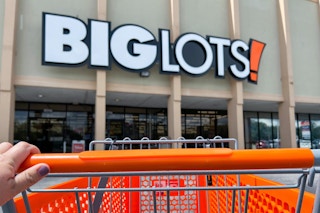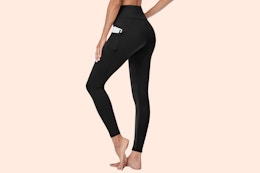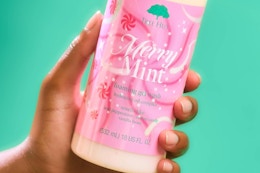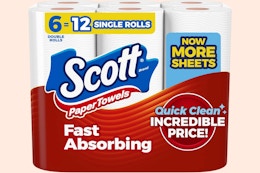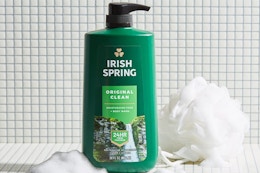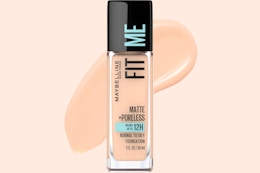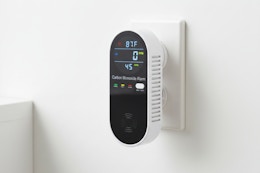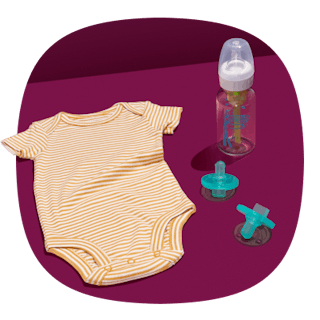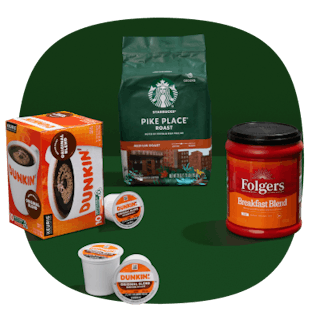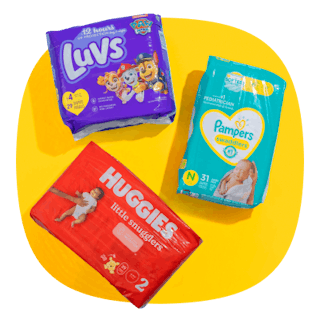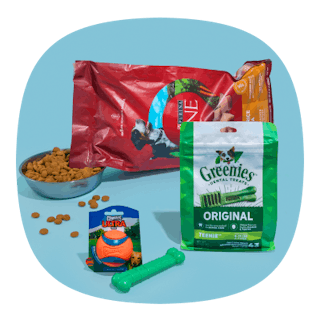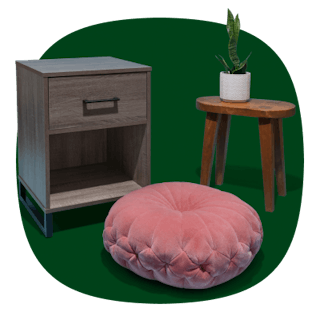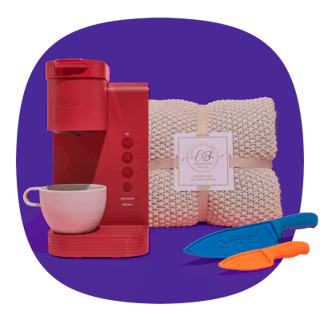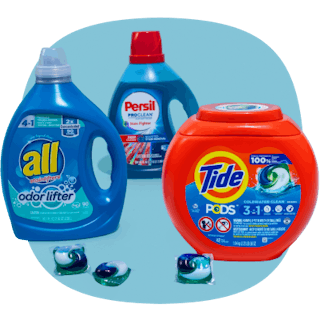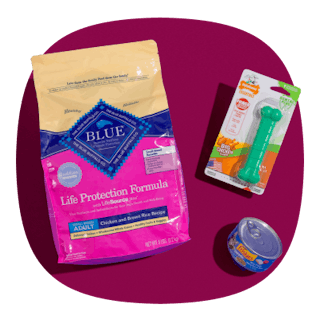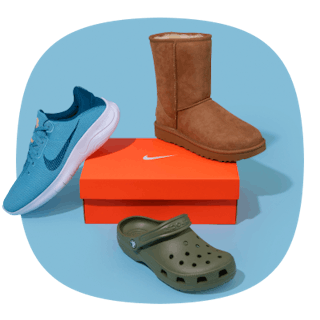We got kind of a break from the retail apocalypse in 2022, but here we are in 2025, three years later, still seeing store closings, fueled mainly by inflation and economic uncertainty.
Lots of store chains — particularly the mall-based ones — continue to struggle, and some are calling it quits. We’ve listed every major chain that closed 10 or more stores in 2025, and will keep this updated as news breaks. Not all of these stores will have liquidation sales — some move product around to other stores — but when there are savings to be had, we’ll let you know in this list.
On the bright side, we've added new store openings to this post to show that not all is lost in the world of retail. The most recent openings include Aldi, Costco, and Ross. Combined, these three are opening over 250 locations. Find out if a new store is coming near you.
There’s a faster way to save. It’s in our app. Download the KCL app for free now .
Store Closings Update: Big Lots has reopened 219 locations and is celebrating with grand opening deals.
After closing all Big Lots locations through early 2025, Variety Wholesalers bought 219 stores, which they have since reopened. As part of their comeback, Big Lots is holding a grand opening celebration on Oct. 30, starting at 9 a.m. (local) at all locations. You can expect giveaways and doorbusters deals during the grand opening event. Big Lots locations are open across the following states.
-
Alabama
-
Florida
-
Georgia
-
Indiana
-
Kentucky
-
Louisiana
-
Michigan
-
Mississippi
-
North Carolina
-
Ohio
-
Pennsylvania
-
South Carolina
-
Tennessee
-
Virginia
-
West Virginia
New Store Closings 2025
Starbucks is shuttering about 1% of their North American locations by the end of September.
On Sept. 25, Starbucks announced that as part of their restructuring, they're closing around 1% of their 18,734 North American (U.S. and Canada) locations by the end of September. That means about 187 store closings will take place over the next few days. Although we don't currently have a list of specific locations, as soon as we do we'll update this post. Starbucks also announced they're laying off 900 non-retail team members on Friday, Sept. 26. On the upside, Starbucks noted they plan to open new cafes over the next year and remodel over 1,000 current locations.
Petco closing 25 locations by Dec. 31.
Like many other retailers on our list, Petco is struggling and has recently announced the closure of 25 locations across the U.S., 12 of which have already shuttered in 2025 (see list below). Petco has yet to release the list of remaining locations slated for closure, but with the last few months of the year upon us, we expect that info to drop soon. When it does, we'll update our list.
Arizona
-
16835 E. Shea Blvd. Ste. 105, Fountain Hills
California
-
444 N. Santa Cruz Ave., Los Gatos
Illinois
-
4840 N. Pulaski Rd. Ste. 100, Chicago
Massachusetts
-
210 Fortune Blvd., Milford
-
239 Newburyport Turnpike, Topsfield
Michigan
-
32074 Gratiot Ave., Roseville
New Jersey
-
300 Ryders Ln., Milltown
Oklahoma
-
2842 N.W. 63rd St., Oklahoma City
Oregon
-
8775 Tualatin Sherwood Rd., Tualatin
Texas
-
1006 Keller Pkwy. Ste. 103, Keller
Washington
-
725 Twin Creek Pl., Walla Walla
Washington, D.C.
-
3100 14th St. Ste. 124
Kroger is closing 60 stores across the U.S. over the next 18 months.
Kroger has announced (in their first-quarter earnings report on Friday, June 20) that they plan to close 60 stores, or about 5% of their existing 1,239 locations, over the next 18 months. Although Kroger has stores in 16 states — Alabama, Arkansas, Georgia, Illinois, Indiana, Kentucky, Louisiana, Michigan, Missouri, Mississippi, Ohio, South Carolina, Tennessee, Texas, Virginia, and West Virginia — they noted that they won't be releasing a list. However, news sources and sites have noted the following locations are scheduled to close or have already closed this year.
Georgia
-
2452 Morosgo Way, Atlanta (July 19)
-
3479 Memorial Drive, Decatur (Sept. 13)
-
3855 Buford Highway, Brookhaven (Oct. 18)
-
11877 Douglas Road, Alpharetta (Aug. 16)
Illinois
-
3311 N. Sterling Ave., Peoria (around Aug. 2)
Indiana
-
901 Johnson St., Elkhart (early August)
-
4526 W. Western Ave., South Bend (early August)
Kentucky
-
4211 S. Third St., Louisville
Tennessee
-
1664 East Done Drive, Kingsport (Sept. 19)
Texas
-
1707 W. University Drive, McKinney
-
3410 Gulf Fwy, Dickinson (June 10)
Virginia
-
466 South Cummings Street, Abingdon (Sept. 19)
-
1904 Emmett Street, Charlottesville (Aug. 22)
West Virginia
-
2908 State St., Gassaway (Aug. 22)
At Home is closing 26 locations by Sept. 30.
After filing bankruptcy on June 16, At Home will close 26 underperforming locations. Although they're scheduled to shutter by Sept. 30, there's no word on store closing or liquidation sales yet.
California
-
750 Newhall Drive, San Jose
-
1982 E. 20th St.,Chico
-
2200 Harbor Boulevard, Costa Mesa
-
2505 El Camino Real,Tustin
-
2900 N. Bellflower Boulevard, Long Beach
-
3795 E. Foothills Boulevard, Pasadena
-
8320 Delta Shores Circle South, Sacramento
-
26532 Towne Center Drive, Suites A-B, Foothill Ranch
Florida
-
14585 Biscayne Boulevard, North Miami
Illinois
-
5203 W. War Memorial Drive, Peoria
-
13180 S. Cicero Ave., Crestwood
Massachusetts
-
300 Providence Highway, Dedham
-
571 Boston Turnpike, Shrewsbury
Minnesota
-
2820 Highway 63 South, Rochester
Montana
-
905 S 24th St. West, Billings
New Jersey
-
301 Nassau Park Boulevard, Princeton
-
461 Route 10 East, Ledgewood
-
1361 NJ-35, Middletown Township
New York
-
300 Baychester Ave., Bronx
-
6135 Junction Boulevard, Rego Park
Pennsylvania
-
720 Clairton Boulevard, Pittsburgh
Virginia
-
8300 Sudley Road, Manassas
-
19460 Compass Creek Parkway, Leesburg
Washington
-
1001 E. Sunset Drive, Bellingham
-
2530 Rudkin Road, Yakima
Wisconsin
-
3201 N. Mayfair Road, Wauwatosa
JCPenney is closing seven stores in May and another in August.
JCPenney is closing seven stores across seven states on or by May 25. The Westfield Annapolis Mall in Annapolis, Maryland, was also scheduled to close this month. However, the store is now slated to shutter by Aug. 31.
California
-
The Shops at Tanforan, San Bruno
Colorado
-
The Shops At Northfield
Idaho
-
Pine Ridge Mall, Pocatello
Kansas
-
West Ridge Mall, Topeka
New Hampshire
-
Fox Run Mall in Newington
New Carolina
-
Asheville Mall, Asheville
West Virginia
-
Charleston Town Center, Charleston
Walgreens is closing 16 stores in the Northeast.
As part of the 1,200 or so store closures Walgreens announced last year, Connecticut, New Jersey, and New York will see a total of 16 store closings over the next few months. Here are the locations that will permanently close soon:
Connecticut
-
1083 Boston Post Road, Milford (April 21)
-
11 Meriden Road, Waterbury (April 22)
-
311 E Main St, Middleton. (April 23)
-
1350 Stanley St., New Britain (May 19)
-
922 Silver Lane, East Hartford (May 20)
-
173 Danbury Road, New Milford (May 21)
-
157 Main St., East Haven (May 22)
New Jersey
-
37 Old Hwy 22, Clinton
-
642 Newman Springs Rd, Lincroft
-
901 Main St, Asbury Park
New York
-
50 N Main St, Ellenville
-
77 7th Ave, New York
-
153 Main St, Owego
-
792 W Main St, Rochester
-
5651 Whiskey Hill Rd, Wolcott
Pennsylvania
-
1 Yorktown Plz, Elkins Park
GameStop is likely going to close hundreds of locations this year to focus on digital sales and bitcoin.
GameStop has announced they intend to close a significant number of locations this year. Although GameStop has yet to release an official list of upcoming closures, they've made it clear the downsize is not due to financial troubles (as is typically the case behind massive store closings). Instead, GameStop reports they'll focus on the online market and invest in cryptocurrency — more specifically, bitcoin.
Stay tuned! We'll update this post with the closure list as soon as GameStop announces the locations they intend to shutter this year.
Dollar General is shuttering 96 stores and 45 Popshelf stores.
Dollar General has announced they will close 96 Dollar General stores and 45 Popshelf stores. According to their last earnings report, the locations were selected based on their current (and predicted future) performance and operating conditions. With over 20,000+ Dollar General stores across 48 states, these store closings, represent less than 1% of their total store count. However, the Popshelf closures represent about 20% off their 220 stores (in 20 states). Dollar General has yet to announce the location closures, their closing date(s), or if any liquidation sales will take place
Forever 21 has filed bankruptcy and is closing all U.S. locations.
Earlier this year, we shared that Forever 21 was in financial trouble and was closing their headquarters and more than half of their U.S. stores. However, on March 16, Forever 21 filed bankruptcy for the second time in six years. This time around, they'll close all of their remaining U.S. locations. Although they have yet to announce any liquidation sales, you can count on deals to start soon. Forever21.com will remain live for shoppers as they shutter locations.
Joann Fabric is closing all locations this year.
It's official, after 82 years in business and filing for bankruptcy for a second time (in less than a year), Joann Fabric is shuttering all of their 850 stores. Going-out-of-business sales are already underway and may potentially last for months. Look for discounts in-store, online and through the Joann app.
Note Joann Fabric is no longer honoring store gift cards, checks, Visa, Mastercard, Discover, or American Expresss gift cards.
Kohl's is closing 27 stores by April 2025.
Kohl's has announced they will shutter 27 stores over the next few months. According to reports, these are underperforming location. They'll be gone by April 2025.
Alabama
-
21000 Town Center Ave., Spanish Fort
Arkansas
-
13909 Chenal Pkwy., Little Rock West
California
-
5505 Balboa Ave., Balboa (San Diego)
-
134 N El Camino Real, Encinitas
-
43782 Christy St., Fremont
-
350 Showers Dr., Mountain View
-
1116 1st St., Napa
-
4525 Rosewood Dr., Pleasanton
-
1896 Arden Way, Point West (Sacramento)
-
5010 Northgate Dr., San Rafael
-
205 Madonna Rd., San Luis Obispo
-
8739 S Sepulveda Blvd., Westchester
Colorado
-
6584 S Parker Rd., Arapahoe Crossing (Aurora)
Georgia
-
2050 W Liddell Rd., Duluth
Idaho
-
400 N Milwaukee St., Boise
Illinois
-
11860 S Route 59, Plainfield
-
3000 Spring Hill Ring Rd., Spring Hill (West Dundee)
Massachusetts
-
501 Technology Center Dr., Stoughton
New Jersey
-
72 Princeton Hightstown Rd., East Windsor
Ohio
-
4150 Hunt Rd., Blue Ash
-
100 Cincinnati Mills Dr., Forest Park (Cincinnati)
Oregon
-
10010 NE Halsey St., Portland Gateway
Pennsylvania
-
351 W Schuylkill Rd., Pottstown
Texas
-
18224 Preston Rd., North Dallas
Utah
-
13319 S 3600 W Ste 13LOT, Riverton
Virginia
-
2100 Centreville Rd., Herndon
-
100 Gristmill Plz, Williamsburg
Macy's is closing 64 locations in 2025.
Macy's made our store closing list in 2024, and now again in 2025. They have announced the 64 locations that will shutter this year. Here is the full list of closures.
Big Lots is closing all remaining locations.
After shuttering hundred of locations in 2024, Big Lots has announced they're closing all remaining stores. Right now, there's a nationwide going-out-of-business sale. Note, Big Lot's CEO said that if a company sale was completed, the store closures could be reversed. For now, it's the end of Big Lots. Look for savings of up to 50% everything during their going-out-of-business sale.
We don't know specifics about a closing date for the remaining stores or individual store sales. However, Big Lots just announced that all previously advertised deals and promotions have been cancelled. That means their Ho-Ho-Holiday Hunt and 12 Days of Deals etc. are done. Starting Dec. 20, all stores are offering up to 25% off toys, home decor, apparel, and furniture. All Christmas and Harvest decor is 50% off. Plus, you can also get 50% off at BigLots.com.
Party City is closing all locations by Feb. 1.
On Dec. 20, Party City announced the company is ending their 40-year run as the nations party supplier. All corporate employees have been let go as of Dec. 20 (with zero severance or benefits) and all stores will be shuttered by Feb. 1, 2025. It seems employees were caught off guard, and details about the closures and any possible going-out-of-business sales are still unknown.
LL Flooring (Lumber Liquidators) is shuttering 211 stores.
LL Flooring (previously known as Lumber Liquidators) recently announced they were going out of business and closing all of their locations. However, the retailer was saved by a last-minute buyer. While this means L.L. Flooring will stay in business, they are still liquidating over 200 stores.
Conn's HomePlus and Badcock Home are closing all of their 550 stores.
Conn's HomePlus and Badcock Home recently filed bankruptcy and announced they would close all of their locations across 15 states. Right now, everything is on sale for 30% - 50% in stores and online. You'll find discounted appliances, furniture, TVs, laptops, and more during their liquidation sales.
Conn's HomePlus and Badcock Home stores are located throughout Alabama, Arizona, Colorado, Florida, Georgia, Louisiana, Mississippi, Nevada, New Mexico, North Carolina, Oklahoma, South Carolina, Tennessee, Texas, and Virginia. All stores will be closed by Oct. 31, 2024.
Store Openings 2025
Costco has four new locations opening in August.
Costco recently announced they are opening four new locations in August. These are in additional to their 634 existing locations.
-
The Villages, Florida (Aug. 6)
-
Richland, Washington (Aug. 8)
-
Allen, Texas (Aug. 15)
-
Spring Valley, Nevada (Aug. 21)
REI is opening three locations in 2025.
In 2025, you can expect to see three new REI locations open during the summer months. Earlier this year, they opened a new store in New York and relocated two others in California and Washington.
Colorado
-
40 Turner Drive, Durango (August)
California
-
99 at Laguna Boulevard, Elk Grove (July)
-
2101 Dr. Martin Luther King Parkway, Chico (June)
Barnes & Noble opening 60 locations in 2025.
Barnes & Noble recently announced they plan to open 60 locations this year. Although we don't have the full list yet, we'll update this post once we get it. Here's a list of the most recent Barnes & Noble openings in 2025.
California
-
2475 Sand Creek Rd, Brentwood
Colorado
-
550 Marshall Rd, Superior
Florida
-
151 N. US Highway 1, Tequesta
-
4149 Tamiami Trail N, Naples
Michigan
-
2236 E. Beltline Ave NE, Grand Rapids
Nebraska
-
7949 Towne Center Pkwy, Papillon
New York
-
301 Walt Whitman Rd Huntington Station
Ohio
-
5501 Dressler Rd North Canton
Pennsylvania
-
720 W. Lancaster Ave, Bryn Mawr
Texas
-
12850 Memorial Drive, Houston
Virginia
-
8139 Stonewall Shops Square, Gainesville
Washington
-
775 NW Gilman Blvd, Issaquah
-
1140 Bellevue Square, Bellevue
Trader Joe's is opening 21 new locations across 14 states in 2025.
Trader Joe's is opening 21 locations across 14 states in 2025. These store openings are in addition to the 600+ existing stores and two recent openings. Trader's Joe's opened at 2305 Medical Center Parkway, Murfreesboro, TN, on April 10. A second new location is at 8726 Greenwood Ave, Seattle, WA, which opened on April 11. Here's where you'll find the "coming soon" locations.
Alabama
-
1771 Montgomery Hwy, Hoover
California
-
9224 Reseda Blvd, Northridge
-
14140 Riverside Dr, Sherman Oaks
-
18700 Ventura Blvd, Tarzana
-
2530 Naglee Rd, Tracy
-
31545 Yucaipa Boulevard, Yucaipa
Colorado
-
9350 Sheridan Blvd, Westminster
Louisiana
-
2501 Tulane Ave, New Orleans
Massachusetts
-
1999 Centre St, Boston
Maryland
-
225 N Washington St, Rockville
Pennsylvania
-
125 West Lincoln Hwy, Exton
-
550 Lancaster Ave, Berwyn
New Jersey
-
675 US-1, Woodbridge
New York
-
388 Feura Bush Rd, Glenmont
-
6400 Amboy Rd, Staten Island
Oklahoma
-
6920 Northwest Expy, Oklahoma City
South Carolina
-
1511 Brookton Circle, Myrtle Beach
Texas
-
11745 I-10 W, San Antonio
Washington
-
4255 Meridian St, Suite 200, Bellingham
Washington D.C.
-
701 Monroe St NE
-
5335 Wisconsin Ave NW
Big Lots reopening 200+ stores.
Big Lots has found new life thanks to Variety Wholesalers who took control of hundreds of Big Lots stores as part of their bankruptcy in 2024. Variety Wholesalers has announced they are reopening 200+ locations this year. The locations marked for reopening are currently being remodeled and will include new merchandise categories.
The following locations are scheduled to reopen in May 2025:
Alabama
-
603 US Hwy 72 W, Athens
-
1820 6th Ave SE, Decatur
-
5363 Hwy 90 W Ste C, Mobile
Georgia
-
110 E Northside Dr, Valdosta
-
323 Habersham Village Cir, Cornelia
-
558 Battlefield Pkwy, Fort Oglethorpe
-
2708 Peach Orchard Rd, Augusta
Indiana
-
195 S US Hwy 231, Jasper
Kentucky
-
200 Sycamore St Ste 151, Elizabethtown
-
472 Eastern Byp, Richmond
-
942 Happy Valley Rd, Glasgow
-
1714 Perryville Rd Ste 400, Danville
Michigan
-
4157 E. Court Street, Burton
-
5112 Miller Rd, Flint
-
7651 23 Mile Rd, Shelby Township
North Carolina
-
100 Westwood Village Dr, Clemmons
-
526 Suite C US Highway 70 SW, Hickory
-
955 N Wesleyan Blvd, Rocky Mount
-
1063 Yadkinville Rd, Mocksville
-
1110 Julian R Allsbrook Hwy, Roanoke Rapids
-
1328 Carter St, Mount Airy
-
1504 N Bridge St, Elkin
-
1826 W US Hwy 421 Ste K, Wilkesboro
-
2407 N Herritage St Ste E, Kinston
-
2587 W Franklin Blvd, Gastonia
-
4956 Long Beach Rd SE Ste 8, Southport
-
12295 Capital Blvd, Wake Forest
Ohio
-
498 Cadiz Rd, Wintersville
-
1965 W State St, Alliance
-
4331 Mahoning Ave NW, Warren
-
6300 E Livingston Ave, Reynoldsburg
-
7100 South Ave, Boardman
-
56104 National Rd, Bridgeport
Pennsylvania
-
866 Scranton Carbondale Hwy, Archbald
-
1010 O’Neill Hwy, Dunmore
-
7405 Westbranch Hwy, Lewisburg
South Carolina
-
915 S St Ste A, Simpsonville
-
1000 N Pine St, Spartanburg
-
2349 Cherry Rd Ste 79, Rock Hill
-
1023A S Pendleton St, Easley
Tennessee
-
420 Park Blvd, Rogersville
-
840 25th St NW, Cleveland
-
1262 NW Broad St, Murfreesboro
-
4825 N Broadway St, Knoxville
Virginia
-
1090 Millwood Pike, Winchester
-
2646 Greensboro Rd, Martinsville
-
2715 W Main St, Waynesboro
-
4300 Portsmouth Blvd, Chesapeake
West Virginia
-
104 Thompson Dr, Bridgeport
-
110 Eagle School Rd, Martinsburg
-
118 Hills Plz, Charleston
-
710 Beverly Pike, Elkins
-
1228 Country Club Rd, Fairmont
-
7200 McCorkle Ave SE, Charleston
The following Big Lots locations opened in April 2025
Kentucky
-
1342 Indian Mound Dr, Mount Sterling, KY
Louisiana
-
755 Veterans Memorial Blvd, Metairie, LA
Mississippi
-
2605 W Main St, Tupelo, MS
-
5778 Hwy 80 E, Pearl, MS
North Carolina
-
1432 E Dixie Dr, Asheboro, NC
Tennessee
-
1041 S Riverside Dr, Clarksville, TN
-
744 Nashville Pike, Gallatin, TN
-
220 Dickson Plaza Dr, Dickson, TN
Virginia
-
2911 Hershberger Rd NW, Roanoke, VA
Aldi is opening over 225 new U.S. stores in 2025.
This year, Aldi is busy expanding their presence in the U.S. by over 225 new locations. Several of the following have already opened, while others are still on the "coming soon" list.
Alabama
-
Semme (coming soon)
Florida
-
Arcadia (coming soon)
-
Aventura (opening soon)
-
Avon Park (coming soon)
-
Bushnell (opening soon)
-
Crystal River (opening soon)
-
Deerfield Beach (coming soon)
-
Fish Hawk (coming soon)
-
Fleming Island (opening soon)
-
Jacksonville (opened in March)
-
Jensen Beach (coming soon)
-
Lake Wales (opening soon)
-
Lakeland (coming soon)
-
Lehigh Acres (opening soon)
-
Lutz (opening soon)
-
Melbourne (opening soon)
-
Ocala (scheduled to open on June 5)
-
Orlando (opening soon)
-
Panama City (opened in March)
-
St. Cloud (opening soon)
-
Tampa (opening soon)
-
The Villages (opening soon)
-
Westlake (opening soon)
-
Fort Lauderdale (opening soon)
Georgia
-
Americus (scheduled to open on May 29)
-
St, Mary's (opening soon)
Indiana
-
Crawfordsville (opened May 22)
-
Vincennes (opened May 22)
-
Westfield (opened May 22)
Louisiana
-
Amite City (opened in March)
-
Gretna (coming soon)
-
Luling (coming soon)
-
Pensacola (opened in March)
-
Slidell (opened in March)
-
Zachary (coming soon)
Massachusetts
-
Greenfield
Michigan
-
Hillsdale (opened in March)
Mississippi
-
D'Iberville (coming soon)
Nebraska
-
Gretna (opened in March)
New York
-
Medford (coming soon)
-
Rochester (coming soon)
-
Owego (coming soon)
North Carolina
-
Charlotte (coming soon)
Ohio
-
Springboro (coming soon)
Pennsylvania
-
Philadelphia (coming soon)
South Carolina
-
Mount Pleasant (coming soon)
Tennessee
-
La Vergne (coming soon)
-
Memphis (coming soon)
Washington D.C.
-
Washington (scheduled to open on June 5)
Wisconsin
-
Delafield (coming soon)
Ikea is opening new stores in 2025 and 2026.
Ikea is expanding its U.S. footprint with several new stores In 2025 and 2026. Here's where they plan to open (or have recently opened) new locations.
Arizona
-
Phoenix (large-format store to open in 2026)
-
Scottsdale (open)
California
-
Colma (open)
-
Ontario (open)
-
Thousand Oaks (open)
Maryland
-
Hunt Valley (opening in July)
New Jersey
-
Cherry Hill (opening in June)
Oregon
-
Beaverton (opening in June)
Texas
-
Dallas (opening in December)
-
McAllen (opening in October)
-
Rockwell (large-format store to open in 2026)
-
San Marcos (opening in July)
Bob's Discount Furniture is opening 20 locations in 2025.
Look for 20 new Bob's Furniture locations to open in seven states in 2025. This year's openings began with new stores in IA, MI, NV, NY, PA, and VA
California
-
Sacramento (coming soon)
Iowa
-
Davenport (open)
Massachusetts
-
Dorchester (coming soon)
Michigan
-
Burnsville (open)
-
Roseville (open)
-
Troy (coming soon)
Nevada
-
Reno (open)
New Jersey
-
Eatontown (coming soon)
New York
-
Bohemia (open)
-
Long Island City (Queens) (coming soon)
North Carolina
-
Cary (coming soon)
-
Durham (coming soon)
-
Fayetteville (coming soon)
-
Jacksonville (coming soon)
-
Wilmington (coming soon)
-
Winston-Salem (coming soon)
Pennsylvania
-
Easton (coming soon)
-
Montgomeryville (set to open on May 23)
Vermont
-
Williston (coming soon)
Virginia
-
Winchester, (open)
Costco is opening new locations in March 2025.
Costo recently announced they're opening several new warehouses in 2025. While the numbers aren't huge, it does increase Costco's warehouse count to 5,963 (35 more than Sam's Club). Plus, Costco is planning on opening six more locations over the next six months.
-
Brentwood, CA (just opened)
-
Highland, CA (just opened)
-
Sharon, MA (opens March 12)
-
Genesee County, MI (opens March 13)
-
Prosper, TX (opens March 14)
-
Weatherford, TX (opens March 15)
Ross celebrated the Grand Opening of 16 new stores on March 8, 2025.
While many retailers are busy closing up shop, Ross held Grand Openings at 16 new locations around the U.S. on March 8. Plus, 80 more Ross locations are coming in 2025, including three stores in Long Island, NY (Islandia, Bohemia, and Farmingville) and three in Puerto Rico (Caguas, Guayama, and Carolina).
-
Fresno, CA
-
Trumbull, CT
-
Bonita Springs, FL
-
Kissimmee, FL
-
Miami, FL
-
Acworth, GA
-
Northlake, IL
-
Bowie, MD
-
Inver Grove Heights, MN
-
Henderson, NC
-
Watchung, NJ
-
Amherst, NY
-
Toledo, OH
-
McAllen, TX
-
Kennewick, WA
-
Wausau, WI
Past Store Closures
If you're looking for past store closures, you can click the links below to find more information and check out our list for a specific year.
Related Reading:
Download the KCL app to add and redeem coupons in store

